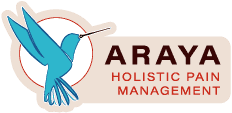
June is Men’s Health month, a time to highlight the need for more awareness of men’s health issues. Given that men have shorter life expectancies and poorer overall health when compared to women, it is not just a courtesy hat tip. The reasons for these poorer health outcomes may be a combination of genetic and social influences. Genetically, men are more prone to heart disease than women. In addition, social constructs around masculinity may contribute to the fact that men are much less likely than women to look after their health and see physicians.
According to the CDC the two most common causes of death for men are heart disease and cancer. June is a time to talk about these looming killers and encourage health screenings that can help promote longer lives for men, but it is also a time to consider quality of life.
‘Healthy aging’ is a buzz phrase often focused on women, but men also want to retain the energy and strength (and good looks!) of their youth once they’ve got the wisdom to go with it. One of the main threats to quality of life for aging men is testosterone decline. Testosterone is a hormone that maintains sex drive, sperm production, body hair, muscle and bone. While not as dramatic as women’s plunging hormones in menopause, all men go through a period of many years known as andropause, marked by a gradual decline in testosterone. Generally this plays out as about a 1% decrease a year after the age of 40. For many men, this is a normal transition that comes without noticeable symptoms. And many continue to have testosterone levels within normal ranges. But for some men, there are accompanying symptoms or further decline in levels that drop them below normal range. About 10-25% of men experience what has been called: “Aging Male Syndrome” and this can be a serious threat to their quality of life. The struggle can include weight gain, insomnia, decreased sex drive, erectile dysfunction, sweats and hot flashes, trouble concentrating, irritability, depression, increased urination, and bone, hair and muscle loss.
The western approach to this problem, in addition to encouraging a healthy lifestyle and regular health screenings, offers drug therapy in the form of hormone replacement for men with severe symptoms. Testosterone therapy has shown some benefits for some, but for others, these benefits are not always clear. And the risks are concerning, as hormone therapy can stimulate the growth of metastatic prostate or breast cancer. It may also increase formation of clots and risk of heart attack or stroke.
When Chinese Medicine talks about aging, the focus is on the kidneys. Kidney energy (qi) and essence governs the life cycles of human development. It is said that we are born with a certain about of this essence that we need to take care of. Testosterone, in general, is thought of as a manifestation of Kidney Yang (the hot, active aspect of kidney qi) As this declines, it is associated with low back pain, cold limbs, lower libido, paling complexion and weakness.
The TCM approach is therefore to boost kidney yang. This is mainly done through acupuncture, moxibustion and herbs. One herb used to boost the kidney yang is called: yin yang huo, commonly known as horny goat weed. This and other individual herbs are known for strengthening kidney yang, but it is more likely that your practitioner will prescribe a multi-herb formula to address the issue from a few angles. Depending on the individual pattern, Jin Gui Shen Qi Wan is a formula that may be prescribed to supplement yang and warm the kidneys, while restoring balance in the system.
Even without herbs, getting in for regular treatment proves very beneficial for men looking to maintain healthy testosterone levels. An eight week protocol of electro-acupuncture and moxibustion given to aging men at acupuncture points UB23 and DU 4 (known for tonifying the kidney yang energy), significantly increased total and free testosterone . The best part? This acupuncture-induced hormone boost comes without the unwanted side effects.
Acupuncture, moxibustion and herbs are some of the best ‘healthy aging’ tools available for both men and women! Improve your quantity and quality of life by talking to your physician about how these therapies can help you!





